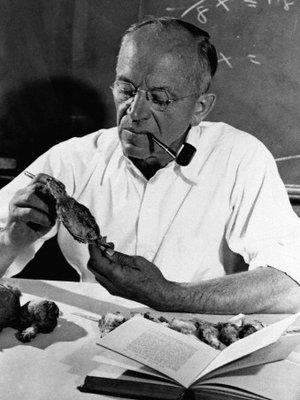Aldo Leopold (Aldo Leopold)

In 1909, Aldo Leopold was assigned to the Forest Service’s District 3 in the Arizona and New Mexico territories. At first, he was a forest assistant at the Apache National Forest in the Arizona Territory. In 1911, he was transferred to the Carson National Forest in northern New Mexico. Leopold’s career, which kept him in New Mexico until 1924, included developing the first comprehensive management plan for the Grand Canyon, writing the Forest Service’s first game and fish handbook, and proposing Gila Wilderness Area, the first national wilderness area in the Forest Service system. On April 5, 1923, he was elected an associate member (now called “professional member”) of the Boone and Crockett Club, a wildlife conservation organization founded by Theodore Roosevelt and George Bird Grinnell. In 1924, he accepted transfer to the U.S. Forest Products Laboratory in Madison, Wisconsin and became an associate director. In 1933, he was appointed Professor of Game Management in the Agricultural Economics Department at the University of Wisconsin–Madison, the first such professorship of wildlife management.
Aldo Leopold lived in a modest two-story home close to the University of Wisconsin–Madison campus with his wife and children. His children followed in his footsteps as teachers and naturalists: Aldo Starker (1913–1983) was a wildlife biologist and professor at UC Berkeley; Luna B. Leopold (1915–2006) became a hydrologist and geology professor at UC Berkeley; Nina Leopold Bradley (1917–2011) was a researcher and naturalist; Aldo Carl Leopold (1919–2009) was a plant physiologist, who taught at Purdue University for 25 years; and daughter Estella Leopold (b. 1927) is professor emeritus at the University of Washington, a noted botanist and conservationist. Today, Leopold’s home is an official landmark of the city of Madison. He purchased eighty acres in the sand country of central Wisconsin. The once-forested region had been logged, swept by repeated fires, overgrazed by dairy cows, and left barren. There he put his theories to work in the field and eventually wrote his best-selling A Sand County Almanac (1949), finished just prior to his death. Leopold died of a heart attack while battling a wild fire on a neighbor’s property.
Born
- January, 11, 1887
- USA
- Burlington, Iowa
Died
- April, 21, 1948
- USA
- Baraboo, Wisconsin
Cemetery
- Aspen Grove Cemetery
- Burlington, Iowa
- USA


